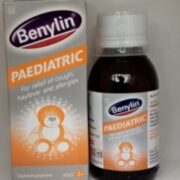Signs Your Baby is Getting Enough BreastMilk
by admin
February 23, 2016

When you first start breastfeeding, you may be concerned your baby is not getting enough breastmilk as you can’t always tell how much a breastfed baby is drinking. However, it’s very rare that women don’t make enough breast milk for their babies.
READ ALSO: 7 Common Breastfeeding Problems & What to Do
Meanwhile, here are typical signs to look out for:
First, your baby is well attached
- Your baby has a wide mouth and a large mouthful of breast.
- Your baby’s chin is touching your breast, their lower lip is rolled down (you can’t always see this) and their nose isn’t squashed against your breast.
- You don’t feel any pain in your breasts or nipples when your baby is feeding, although the first few sucks may feel strong.
- You can see more of the dark skin around your nipple (areola) above your baby’s top lip than below their bottom lip.
Your baby is getting enough milk if:
- Baby starts feeds with a few rapid sucks followed by long, rhythmic sucks and swallows with occasional pauses.
- You can hear and see your baby swallowing.
- Your baby’s cheeks stay rounded, not hollow, during sucking.
- They seem calm and relaxed during feeds.
- Your baby comes off the breast on their own at the end of feeds.
- Their mouth looks moist after feeds.
- Your baby appears content and satisfied after most feeds.
- Your breasts feel softer after feeds.
- Your nipple looks more or less the same after feeds – not flattened, pinched or white.
- You may feel sleepy and relaxed after feeds.
READ ALSO: 5 Tips to Boost Your Breast Milk Supply
Other signs your baby is feeding well
- Your baby gains weight steadily after the first two weeks – it’s normal for babies to lose some of their birth weight in the first two weeks.
- They appear healthy and alert when they’re awake.
- From the fourth day, they should do at least two soft, yellow poos every day for the first few weeks.
- From day five onwards, wet nappies should start to become more frequent, with at least six heavy, wet nappies every 24 hours. In the first 48 hours, your baby is likely to have only two or three wet nappies.
It can be hard to tell if disposable nappies are wet. To get an idea, take a nappy and add two to four tablespoons of water. This will give you an idea of what to look and feel for.
Culled from nhs



Noted.Thanks
Thanks MIM, for sharing this.
Noted.
Noted
Thanks MIM
Noted
Tnkx MIM for sharing
Thanks
well noted tnx
Nice one MIM. Thanks for sharing
Thanks a bunch MIM.
Thanks
tanx mim
Noted
Thank for shaing wonderful tips
Ohhk… good one. Thanks